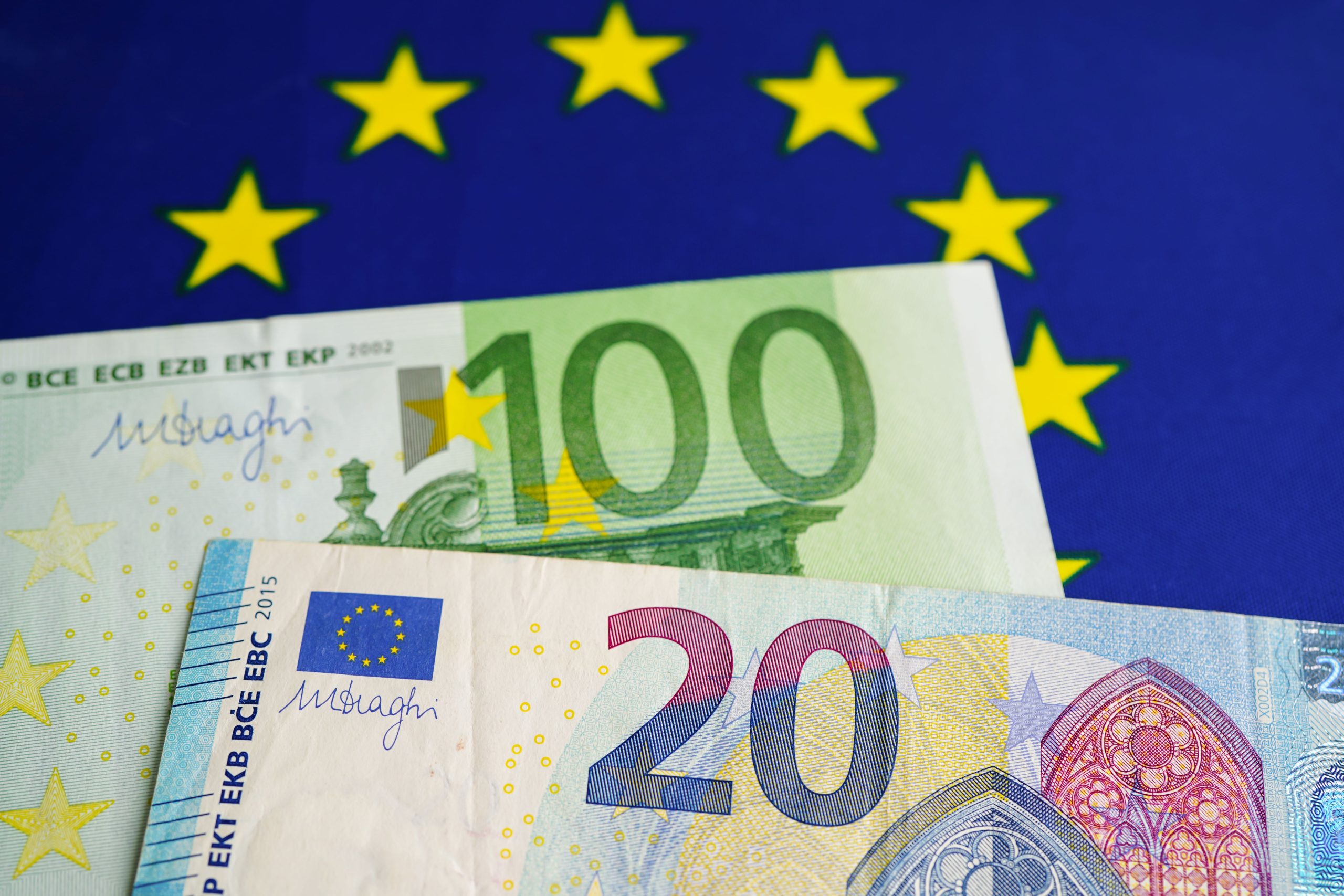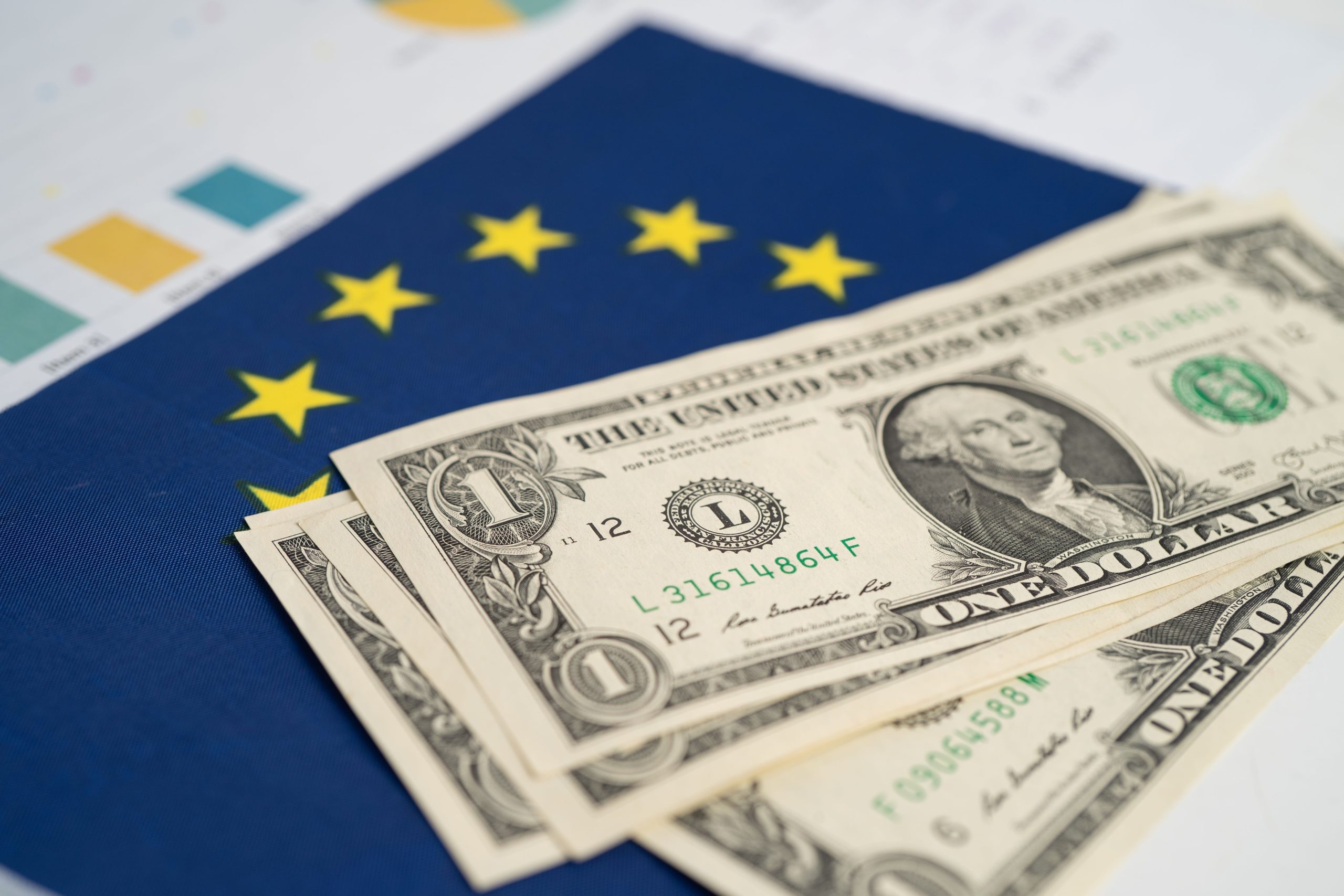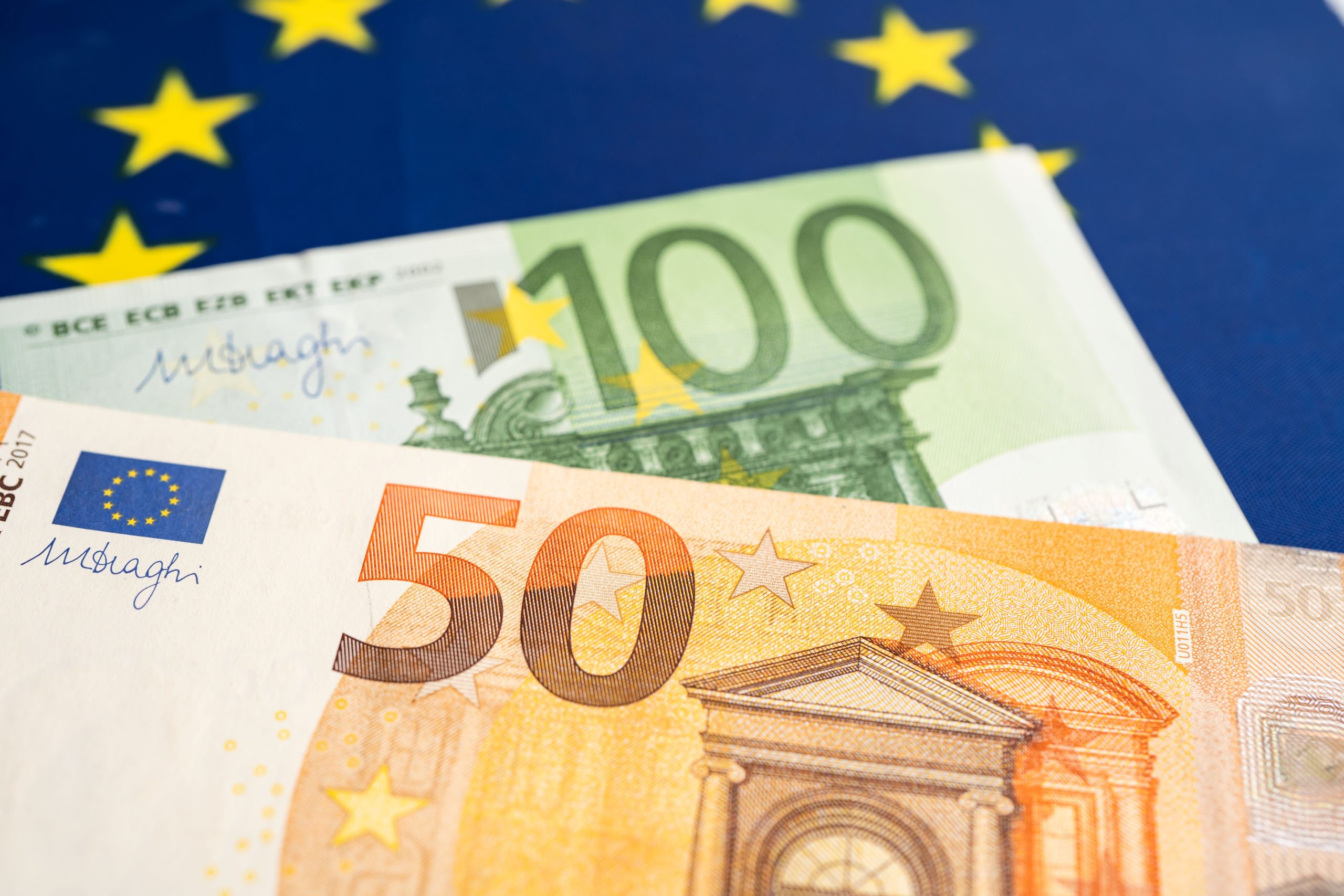The European Union (EU) has long been a catalyst for international business growth and development, providing a platform for companies worldwide to expand, innovate, and thrive in a global market.
Through its comprehensive range of funding and grant programs, the EU actively supports international businesses, facilitating economic growth, technological advancement, and sustainable development across various sectors.
These financial supports are designed not only to bolster the European economy but also to foster partnerships and collaborations that transcend borders, promoting a more interconnected and prosperous global business landscape.
In this guide, we will take a deeper look at EU funding and grants, giving international businesses the knowledge they need to enter the European market with enough funding to boost their success rate.
Overview of EU Funding and Grants

EU funding and grants represent critical financial tools designed to support a wide array of projects and initiatives that align with the European Union’s strategic objectives.
These financial instruments are tailored to bolster economic growth, foster innovation, support research and development, encourage environmental sustainability, and promote social inclusion both within the EU and internationally.
Understanding the nature and purpose of these supports is key to appreciating their impact on global business and development.
What are EU Funding and Grants?
EU Funding
EU Funding broadly encompasses various forms of financial support provided by the European Union to support projects and organizations contributing to the EU’s policy objectives. This funding can take multiple forms, including loans, equity, and guarantees.
It’s often channeled through national or local governmental bodies to the end recipients, which can be businesses, NGOs, or research institutions. EU funding is typically competitive and requires recipients to meet specific criteria and objectives set by the EU.
EU Grants
EU Grants, on the other hand, are non-repayable funds disbursed by the European Union to support projects and organizations that further EU policy objectives.
Unlike loans or equity, grants do not need to be repaid, making them particularly attractive for non-profit projects, research endeavors, and initiatives aimed at public good. Grants are awarded based on the merit of the project and its alignment with the EU’s goals, often through a competitive application process.
The Objectives of the EU in Providing These Financial Supports
The European Union aims to achieve several overarching objectives through its provision of funding and grants, including:
- Promoting Economic Growth and Competitiveness: By providing financial support for businesses and projects, the EU seeks to enhance the economic vitality and global competitiveness of the European market. This includes fostering innovation, supporting small and medium-sized enterprises (SMEs), and facilitating access to new markets.
- Encouraging Research and Innovation: A significant portion of EU funding is dedicated to research and innovation projects through programs like Horizon Europe. The goal is to drive scientific advancements, technological breakthroughs, and innovative solutions to global challenges.
- Supporting Environmental Sustainability: The EU is committed to promoting sustainable development and environmental protection. Funding and grants are directed towards projects that contribute to the EU’s Green Deal objectives, including climate action, renewable energy, and conservation efforts.
- Enhancing Social Inclusion and Cohesion: Financial supports are also used to foster social inclusion, education, and cultural development, aiming to build a more cohesive and inclusive European society.
- Strengthening International Partnerships and Development: The EU provides funding to support international cooperation, development aid, and partnerships with countries outside the EU, promoting peace, security, and sustainable development globally.
Through these financial supports, the EU not only aims to achieve its policy objectives but also to catalyze positive change on a global scale, demonstrating a commitment to innovation, sustainability, and international cooperation.
Types of EU Funding and Grants Available for International Businesses

The European Union offers a variety of funding and grant programs tailored to support international businesses across multiple domains, including research and innovation, SME support, environmental sustainability, and digitalization.
These programs are designed to foster global economic growth, encourage innovation, and address some of the most pressing challenges of our times. Below are detailed descriptions of notable EU programs in these areas:
Research and Innovation Programs
Horizon Europe is the EU’s flagship funding program for research and innovation, running from 2021 to 2027 with a budget of around €95.5 billion. It aims to secure the EU’s technological leadership on the global stage, support the creation and better dissemination of excellent knowledge, and promote the EU’s competitiveness and growth.
The program supports projects across a broad range of sectors, including health, digital, industry, space, climate, energy, mobility, food, and natural resources, with a strong focus on tackling global challenges and promoting sustainable development.
Horizon Europe is open to universities, research institutions, businesses, and sometimes even non-EU entities, fostering international collaboration in cutting-edge research and innovation projects.
SME Support and Entrepreneurship Encouragement
COSME (Competitiveness of Enterprises and Small and Medium-sized Enterprises) program, running from 2014 to 2020 and succeeded by similar initiatives under the Single Market Programme, was designed to strengthen the competitiveness and sustainability of the EU’s enterprises, particularly small and medium-sized enterprises (SMEs).
It focused on improving access to finance through loan guarantees and equity investments, facilitating access to markets within the EU and globally, and fostering an entrepreneurial culture by supporting entrepreneurs, including young and female entrepreneurs.
COSME aimed to encourage SMEs to engage in growth and innovation, contributing significantly to the EU economy.
Environmental and Sustainability Projects
LIFE Program is the EU’s funding instrument for the environment and climate action. Established in 1992, LIFE has co-financed thousands of projects across the EU and beyond, focusing on environmental, nature conservation, and climate action initiatives.
The program aims to contribute to sustainable development and the achievement of the EU’s key environmental and climate objectives under the European Green Deal, such as biodiversity conservation, waste management, resource efficiency, and the transition to a circular economy.
LIFE encourages innovative practices and technologies that have a positive impact on the environment and climate, making it a vital tool for businesses and organizations committed to sustainability.
Digitalization and Technology Enhancements
Digital Europe Program is a new funding program designed to accelerate the economic recovery and drive the digital transformation of Europe.
With a budget of approximately €7.5 billion for the 2021-2027 period, it focuses on deploying digital technologies across key areas such as high-performance computing, artificial intelligence, cybersecurity, advanced digital skills, and ensuring a wide use of digital technologies across the economy and society.
The program aims to enhance Europe’s technological sovereignty and to ensure that European businesses, including SMEs, and public administrations have access to the latest digital technologies. It supports projects that boost digital skills, deploy digital solutions, and enhance digital innovation, contributing to the digitalization of European industry.
Eligibility Criteria

Eligibility for EU funding and grants can vary significantly depending on the specific program and its objectives.
However, there are general and specific criteria that applicants must typically meet to qualify for these financial supports. Understanding these criteria is crucial for any international business or organization looking to tap into EU funding opportunities.
General Criteria for Eligibility Across Various Programs
While specifics can vary, most EU funding and grants share some common eligibility criteria:
- Geographical Eligibility: Applicants must usually be based in an EU Member State or an associated country. However, many programs also allow participation from entities in other countries, especially when such participation supports the program’s objectives.
- Type of Entity: Depending on the program, eligible applicants can include businesses (from SMEs to large enterprises), universities, research institutions, non-governmental organizations (NGOs), and sometimes even individuals or public administrations.
- Alignment with Program Objectives: Projects or initiatives must align with the goals and priorities of the funding program. This could involve contributing to research and innovation, fostering sustainability, supporting digital transformation, or promoting social inclusion.
- Financial and Operational Capacity: Applicants must demonstrate the financial and operational capacity to successfully complete the project. This might include having the necessary management capabilities, infrastructure, and financial stability.
Specific Criteria for Noteworthy Programs
Horizon Europe
- Participants from EU Member States, associated countries, and, in some cases, other countries worldwide.
- Projects must focus on research and innovation within the program’s thematic areas.
- Consortia often need to be transnational, involving participants from different countries.
COSME (and its successors under the Single Market Programme)
- Targeted primarily at SMEs based in the EU or in countries participating in the COSME program.
- Activities should aim to improve competitiveness, access to markets, or entrepreneurship.
- Involvement in consortia may be required for certain calls, depending on the specific objective.
LIFE Program
- Eligible applicants include entities from EU Member States, certain non-EU countries, and, in specific cases, any legal entity located outside the EU if it is crucial for achieving the objectives of a given project.
- Projects must contribute to environmental protection, climate action, or nature conservation, in line with the LIFE program’s priorities.
Digital Europe Program
- Applicants can be public or private entities, including businesses, NGOs, and research institutions, based in EU Member States or associated countries.
- Projects should focus on digital technologies’ deployment and uptake across the five key areas: high-performance computing, artificial intelligence, cybersecurity, advanced digital skills, and digital public services.
It’s essential for applicants to carefully review the specific eligibility criteria and guidelines provided for each funding call. These can usually be found in the call documentation or program guide. Understanding and meeting these criteria is the first step in a successful application process, ensuring that the proposed project aligns with the objectives of the EU funding or grant program.
Application Process

Applying for EU funding and grants involves a structured process that requires thorough preparation, attention to detail, and adherence to specific guidelines. Here’s a step-by-step guide to navigating the application process, along with tips to enhance your application and common pitfalls to avoid.
Step-by-Step Guide to Applying for EU Funding and Grants
Step #1: Identify the Right Funding Opportunity:
- Begin by researching available EU funding and grant programs to find one that aligns with your project’s objectives and your organization’s profile.
- Use the EU’s official funding and grants portal to filter opportunities by topic, type of organization, and other criteria.
Step #2: Carefully Read the Call for Proposals:
- Each funding opportunity comes with a detailed call for proposals or guidelines that include eligibility criteria, application requirements, and evaluation criteria.
- Understanding these documents is crucial to ensure your project aligns with the program’s objectives.
Step #3: Register Your Organization:
- Before applying, you’ll need to register your organization in the EU’s Participant Register and obtain a Participant Identification Code (PIC).
Step #4: Prepare Your Application:
- Gather all necessary documentation, including project descriptions, budgets, timelines, and any required partner or consortium agreements.
- Pay close attention to the structure and content requirements specified in the call for proposals.
Step #5: Write a Compelling Project Proposal:
- Clearly articulate the objectives, expected impact, and innovation of your project.
- Demonstrate alignment with the funding program’s goals and how your project contributes to EU priorities.
Step #6: Submit Your Application:
- Applications are usually submitted online through the Funding & Tender Opportunities Portal.
- Ensure your application is complete and submitted before the deadline.
Step #7: Evaluation Process:
- After submission, your application will be evaluated against the criteria outlined in the call for proposals.
- This process can take several months, depending on the program.
Step #8: Notification and Grant Agreement:
- If successful, you’ll receive a notification and enter into a grant agreement detailing the funding and project requirements.
- Unsuccessful applicants usually receive feedback and may apply for other opportunities.
Tips for Preparing a Compelling Application
- Align With Objectives: Ensure your proposal clearly aligns with the funding program’s objectives and demonstrates how it addresses EU priorities.
- Clarity and Conciseness: Be clear and concise in your descriptions. Avoid jargon and ensure your objectives, methodology, and impact are easily understandable.
- Demonstrate Impact: Highlight the expected outcomes and impact of your project, including innovation, environmental benefits, or contributions to policy goals.
- Include Strong Partnerships: For consortium projects, include partners with complementary strengths and a clear role for each member.
Common Pitfalls to Avoid
- Misaligning with Program Goals: Failing to align your project with the specific goals and priorities of the funding program.
- Incomplete Applications: Submitting incomplete applications or missing essential documentation.
- Lack of Clarity: Providing vague descriptions or unrealistic objectives and outcomes.
- Ignoring the Evaluation Criteria: Not tailoring the application to address the specific evaluation criteria outlined in the call for proposals.
Successfully navigating the EU funding and grant application process requires careful planning, attention to detail, and a strong alignment with EU priorities. By following these steps and heeding the advice provided, applicants can enhance their chances of securing EU funding for their projects.
Success Stories

Success Story 1: Graphene Flagship
Company/Project: Graphene Flagship
EU Program: Horizon 2020
Overview: The Graphene Flagship is one of the largest research initiatives funded by the EU, with a budget of €1 billion. It aims to take graphene, a material with exceptional properties, from the realm of academic laboratories into European society, creating economic growth and new jobs.
Impact: Since its inception, the Graphene Flagship has brought together over 150 academic and industrial research groups in 23 countries. Its research has led to significant breakthroughs in electronics, composites, and energy storage technologies. The project has helped spawn new companies and products, driving Europe forward in high-tech innovation and commercialization.
Success Story 2: Northvolt
Company: Northvolt
EU Program: European Investment Bank (EIB) financing, supported by the European Fund for Strategic Investments (EFSI)
Overview: Northvolt is a Swedish company focused on manufacturing sustainable lithium-ion batteries with a minimal carbon footprint. The company received significant funding from the European Investment Bank, facilitated by the Investment Plan for Europe.
Impact: The EIB’s funding supported the construction of Northvolt Ett, the first large-scale lithium-ion battery factory in Europe, located in Skellefteå, Sweden. This venture is crucial for the transition to green energy, providing batteries for electric vehicles and storage solutions. Northvolt’s progress has significantly contributed to the EU’s goals for sustainability, innovation, and competitiveness in the green technology sector.
Success Story 3: DeepMind
Company: DeepMind
EU Program: Horizon 2020
Overview: Although now a well-known global leader in artificial intelligence, DeepMind participated in EU-funded research projects before being acquired by Google. The company was involved in projects focusing on cognitive systems and robotics, demonstrating the EU’s early support for pioneering AI research.
Impact: DeepMind’s involvement in Horizon 2020 projects helped foster its growth and innovation in AI and machine learning. While DeepMind has since evolved beyond its startup phase, its success story underscores the potential of EU funding to support cutting-edge research that can scale to global impact.
Success Story 4: WindFloat Atlantic
Company: WindPlus Consortium (includes EDP Renewables, Engie, Repsol, and Principle Power)
EU Program: NER300 (financed by the EU’s Emissions Trading System)
Overview: WindFloat Atlantic is a pioneering offshore wind farm project located off the coast of Portugal. It utilizes innovative floating wind turbine technology, enabling the exploitation of deep-water wind resources that were previously inaccessible.
Impact: The EU’s financial support was instrumental in the realization of the WindFloat Atlantic project, which has significantly contributed to the advancement of renewable energy technology and the EU’s renewable energy goals. By demonstrating the viability of floating wind technology, the project paves the way for future offshore wind projects worldwide, enhancing energy security and sustainability.
Navigating Challenges

Applying for and utilizing EU funds involves navigating a complex landscape of legal and administrative requirements. Businesses often encounter several common challenges throughout this process, from the initial application stage to the final implementation and reporting phases. Understanding these challenges and knowing how to address them is crucial for success. Here are some of the most common hurdles along with advice on how to overcome them:
Common Challenges
- Complex Application Processes: The intricacy of application forms and the extensive documentation required can be daunting, especially for SMEs and first-time applicants.
- High Competition: Many EU funding programs are highly competitive, with a limited number of projects receiving funding out of the many applications submitted.
- Matching Funds Requirements: Some programs require applicants to provide matching funds or co-financing, which can be a barrier for startups and smaller organizations.
- Regulatory and Compliance Requirements: Adhering to EU regulations and standards, including financial reporting, project management, and audit compliance, can be challenging.
- Intellectual Property (IP) Rights Issues: Navigating IP rights and ensuring the proper management and protection of IP within EU-funded projects can be complex.
Overcoming Challenges
Simplify Application Processes
- Start Early: Begin preparing your application well in advance of the deadline to allow ample time for gathering information and documentation.
- Seek Guidance: Utilize the resources and guidance provided by the EU and national contact points. Attend informational workshops and webinars to gain insights into the application process.
Enhance Your Proposal’s Competitiveness
- Clearly Demonstrate Alignment: Ensure your project clearly aligns with the specific objectives of the funding program and addresses EU policy priorities.
- Focus on Impact: Highlight the potential impact of your project, including innovation, societal benefits, and alignment with EU strategic interests.
- Leverage Partnerships: Build strong consortia with partners that add value and credibility to your proposal. Collaboration can enhance the scope and impact of your project.
Address Matching Funds and Compliance Requirements
- Explore Financing Options: Investigate various financing sources, including private investments, loans, or national funding programs, to meet co-financing requirements.
- Implement Robust Project Management: Establish clear project management structures, financial oversight, and compliance monitoring from the outset to ensure adherence to EU regulations.
Manage Intellectual Property Rights
- Develop an IP Strategy: Early in the project, develop a clear strategy for managing and protecting IP, in agreement with all partners involved.
- Utilize IP Resources: Take advantage of EU support services, such as the European IP Helpdesk, which provides free advice and resources on IP management in EU-funded projects.
By anticipating these challenges and preparing accordingly, businesses can navigate the complexities of EU funding more effectively, increasing their chances of success. Engaging with the process fully informed and well-prepared is key to leveraging EU funds to support innovation, growth, and development.
Future Trends

The landscape of EU funding and grants is poised for evolution in response to emerging global challenges, shifts in policy priorities, and advancements in technology. These changes will likely influence the availability of funding, the focus areas prioritized for support, and the mechanisms for application and distribution. Here are some insights into how EU funding and grants for international businesses might evolve in the coming years:
Increased Focus on Green and Digital Transitions
The EU has already placed a strong emphasis on green and digital transitions as key priorities for its future. This focus is expected to intensify, with more funding directed towards projects and initiatives that support the European Green Deal and the digitalization of European industries. Businesses that contribute to sustainability, climate action, circular economy, and digital innovation will likely find increased opportunities for funding.
Emphasis on Resilience and Autonomy
In light of recent global disruptions, including the COVID-19 pandemic and geopolitical tensions, the EU is placing a greater emphasis on resilience in critical supply chains and strategic autonomy. Future funding may prioritize projects that enhance Europe’s independence in critical areas such as health, technology, and energy, reducing reliance on external sources and strengthening the EU’s strategic capabilities.
Support for Innovation and Research
Innovation remains at the heart of the EU’s strategy for competitiveness on the global stage. Funding programs like Horizon Europe are set to continue providing substantial support for research and innovation, with an emphasis on breakthrough technologies, startups, and SMEs driving innovation. There may be a greater push towards market-oriented research and development, aiming to shorten the path from lab to market.
Increased Accessibility and Simplification
Recognizing the complexity of accessing EU funds, there is a trend towards simplifying application processes and making funding more accessible, especially for SMEs and startups. This may involve streamlined procedures, enhanced guidance and support services, and the use of digital platforms to facilitate applications and reporting.
Leveraging Public-Private Partnerships
The future may see an increased reliance on public-private partnerships (PPPs) to leverage private investment and expertise in achieving EU objectives. This approach could enhance the impact of EU funding, particularly in areas requiring significant investment, such as infrastructure, energy, and technology.
Focus on Social Innovation and Cohesion
As the EU aims to build a more inclusive and cohesive society, funding may increasingly support social innovation, skills development, and projects that address inequality and promote social inclusion. This reflects a broader understanding that economic growth should be inclusive and benefit all members of society.
Geographic Diversification and International Cooperation
The EU is likely to continue and expand its funding for international cooperation, supporting projects that foster global partnerships, particularly with developing countries. This includes addressing global challenges such as climate change, health, and digital divides, as well as promoting peace and security.
Key Takeaways
As we stand at the precipice of a new era, the landscape of EU funding and grants emerges as a formidable catalyst for transformative change, driving international businesses and innovators towards horizons brimming with opportunity, sustainability, and digital prowess. In navigating the intricate tapestry of EU financial supports, businesses are not merely participants but vital architects of a future defined by green revolutions, technological breakthroughs, and an unwavering commitment to societal progress.
The evolving priorities of EU funding—steered towards fostering green initiatives, bolstering digital transformation, enhancing strategic autonomy, and knitting the fabric of an inclusive society—signal a clarion call to action for businesses across the globe. This call to action is not just an invitation to innovate but a mandate to pioneer solutions that address our most pressing global challenges, from climate change to digital divides, ensuring resilience and prosperity for generations to come.
For international businesses, the journey through the labyrinth of EU funding and grants is one of discovery, innovation, and partnership. It is a journey underpinned by the promise of creating a more sustainable, interconnected, and resilient world. As we gaze into the future, it is clear that those who align their vision with the EU’s strategic objectives—leveraging the wealth of opportunities afforded by EU funding—will not only thrive but also play an integral role in sculpting a future where economic growth, technological advancement, and environmental stewardship converge.
In this dynamic landscape, the message is clear: the future belongs to those who dare to innovate, collaborate, and drive forward with a clear vision aligned with the EU’s transformative agenda. The path is set, the resources are available, and the time is now. Let us seize this unparalleled opportunity to forge a future that reflects our highest aspirations, leveraging EU funding and grants as the keystone of a prosperous, sustainable, and inclusive tomorrow.





